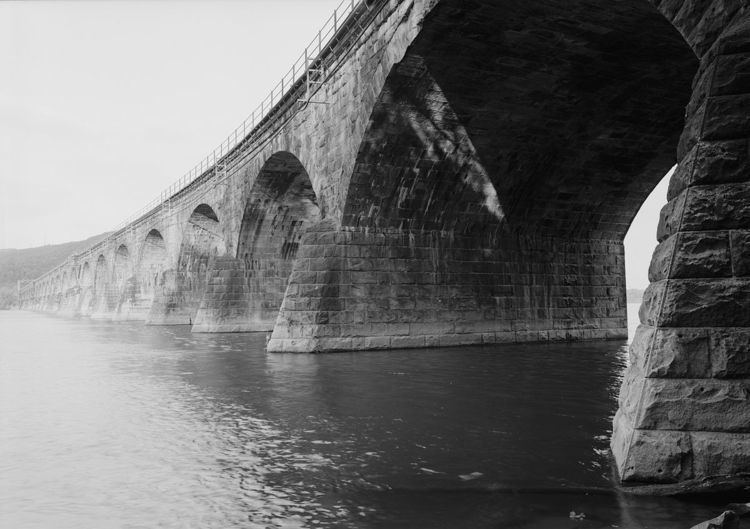Construction started April 1900 Total length 1,164 m | Width 52 feet (16 m) Opened 30 March 1902 | |
 | ||
Similar Susquehanna River, Marysville Bridge, Clarks Ferry Bridge, Market Street Bridge, Horseshoe Curve | ||
The Rockville Bridge, at the time of its completion in 1902, was, and remains, the longest stone masonry arch railroad viaduct in the world. Constructed between April 1900 and March 1902 by the Pennsylvania Railroad, it has forty-eight 70-foot spans, for a total length of 3,820 feet (1,160 m).
Contents
The bridge crosses the Susquehanna River about 5 miles (8 km) north of Harrisburg, Pennsylvania. The eastern end is in Rockville, and the western end is just south of Marysville.
765 meets the ocs on rockville bridge
History
The original bridge on the spot opened on September 1, 1849, when the PRR began operating over it. The Northern Central Railway began to use it after abandoning their Marysville Bridge. The current bridge was built by Italian laborers, who worked for two contractors (Drake & Stratton Co. and H.S. Kerbaugh), one on the east side of the Susquehanna River and one on the west. Local people from the Harrisburg area also worked on the bridge.
For most of its life the bridge carried four main line tracks. They were reduced to three in the 1980s when the PRR Main Line was modernized across Pennsylvania. In the late 1990s an intermodal container was blown off an intermodal freight train and landed in the river, prompting Norfolk Southern to reconfigure the track layout by terminating the wye track to Enola at the west end of the bridge. This reduced the number of main line tracks to two, but left a buffer zone on either side to prevent further containers ending up in the river, although high winds from the departing December 2010 North American blizzard resulted in a similar outcome on December 27, 2010.
The track from the west side of the bridge was shortened back to a new CP point named "Mary" not because of wind blowing containers off, but because the years of trackwork, and adding tons of ballast, had raised the center of gravity. The additional higher weight began pushing out on the sides of the bridge. This led to the failure of the downriver side under the weight of a coal train. When the sidewall failed, it also disproved the once popular thought that the core of the bridge was filled with concrete. During times of flooding it was routine to park heavy trains on the bridge for extra strength. Currently, the bridge is used by the Norfolk Southern Railway and Amtrak. The bridge was listed on the National Register of Historic Places in 1975.
